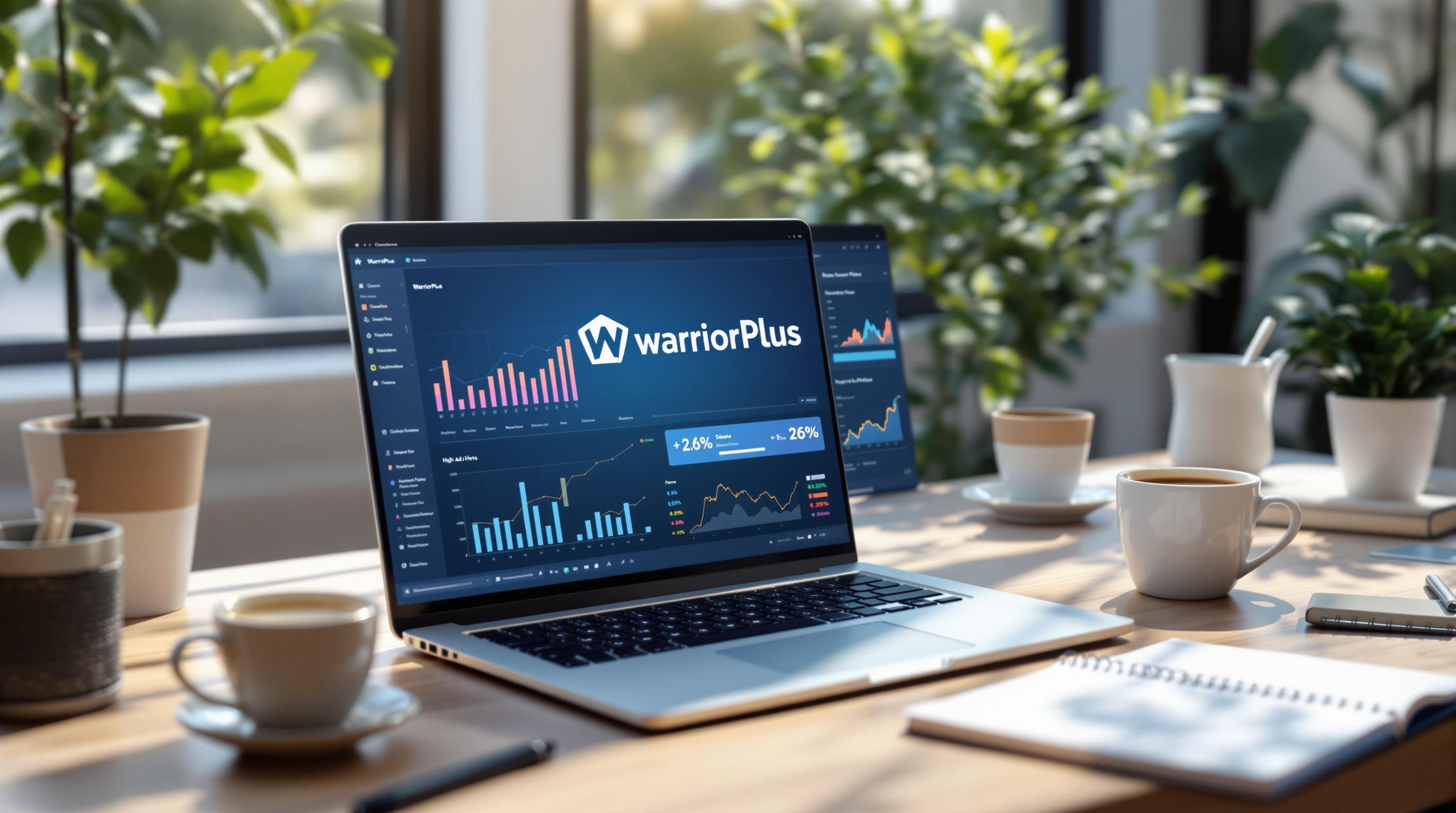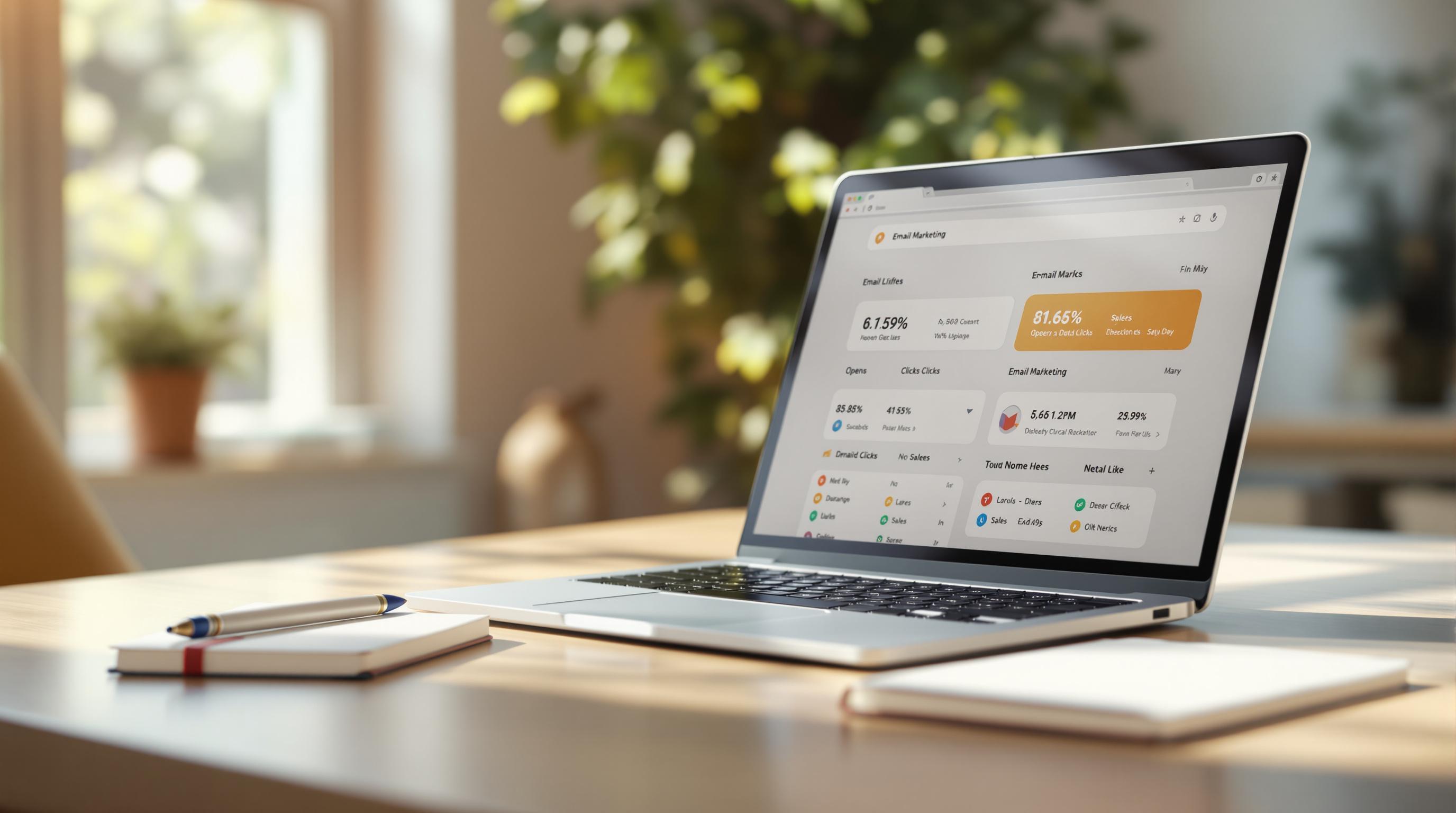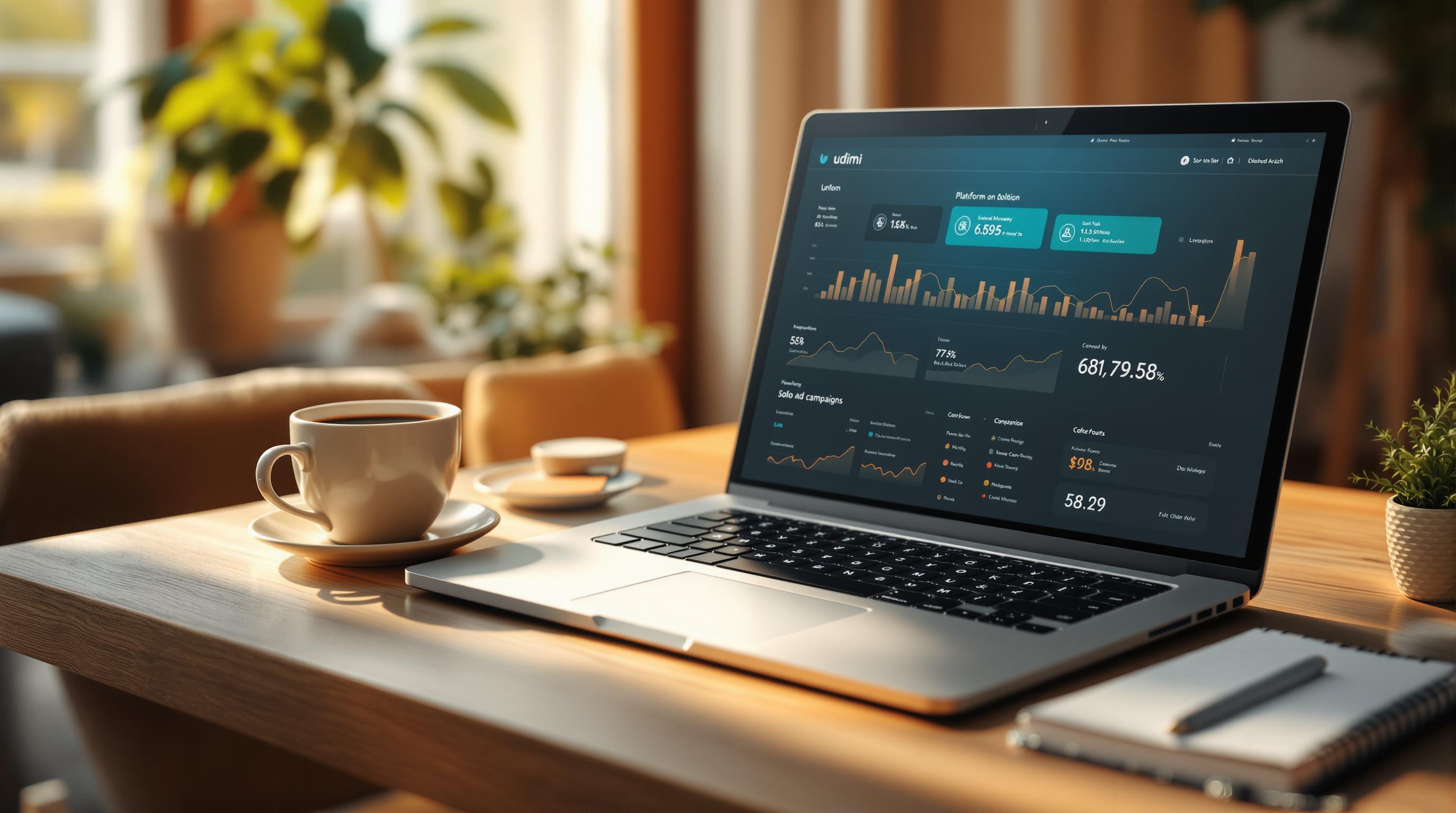Solo ads can drive targeted traffic, but choosing the wrong vendor risks wasting your budget and harming your brand. Here are the five biggest red flags to avoid when purchasing solo ads:
- Hidden or Unclear Traffic Sources: Vendors who don't disclose where their traffic comes from often deliver low-quality or bot-driven clicks.
- Unrealistic Performance Claims: Promises of extremely high conversion rates or guaranteed sales are often too good to be true.
- Hidden Fees and Unclear Pricing: Watch out for unexpected charges that can inflate costs by 40-200%.
- Missing or Fake Reviews: Many testimonials are unreliable; verify reviews and ask for proof of past performance.
- No Money-Back Guarantee: Vendors unwilling to offer clear refund policies may not stand behind their traffic quality.
Quick Overview of Red Flags and How to Avoid Them
| Red Flag | What to Look For | What to Avoid |
|---|---|---|
| Hidden Traffic Sources | Open rates of 15-35%, real audience demographics | Bots, click farms, vague "global audience" claims |
| Unrealistic Claims | Conversion rates of 0.5-3%, proven past performance | Guaranteed sales, CTRs above 8% |
| Hidden Fees | Transparent pricing, itemized quotes | Vague costs, dynamic pricing |
| Missing/Fake Reviews | Verified metrics, real testimonials | Generic 5-star reviews, no specifics |
| No Money-Back Guarantee | Clear refund terms, performance benchmarks | Ambiguous or verbal-only guarantees |
Solo Ads Scams - What You Need To Know Before Buy
1. Hidden or Unclear Traffic Sources
Traffic from hidden or unclear sources often converts 70-90% less effectively than traffic from transparent providers [1]. For instance, one marketer spent $88 on what was advertised as "premium" US/UK traffic, only to find that 199 out of 200 opt-ins came from click farms in Romania [6].
To avoid falling into this trap, it's crucial to verify traffic quality using specific metrics:
| Legitimate Traffic Indicators | Warning Signs |
|---|---|
| Open rates between 15-35% | Extremely high open rates (85%+) that suggest bot activity |
| Click-through rates of 2-8% | Traffic originating from regions outside your target market |
| Conversion rates that align with industry norms (e.g., 1-3% for informational products) | Sudden spikes in engagement without corresponding sales |
| IP locations matching your target audience | Multiple visits from duplicate IP addresses |
Steps to verify traffic before buying:
- Use UTM parameters in Google Analytics to track traffic behavior [5].
- Utilize real-time location verification tools to confirm visitor origins [6].
- Start with small-scale campaigns (50-100 clicks) to test traffic quality before committing to larger purchases [4].
The risks are real. One marketer spent $1,200 on a campaign that achieved an 85% open rate but resulted in zero sales due to bot-driven traffic. Worse, spam complaints from such traffic can lower email deliverability rates by 34-60% [6].
Reputable vendors will share audience demographics, explain how their lists are built, and provide third-party verification. Be cautious of vague claims like "proven results" or "global audience" without concrete evidence to back them up [1]. These red flags are often the first sign of deeper credibility issues, tying directly into the next concern: exaggerated performance claims.
2. Unrealistic Performance Claims
Exaggerated promises about campaign results can be another major pitfall in solo ad marketing. According to The Marketer's Guide to Buying Solo Ads, legitimate solo ads typically deliver conversion rates between 0.5-3%, but some vendors claim outcomes that are far beyond industry norms [4].
Here’s how to spot unrealistic claims:
| Metric | Realistic Range | Red Flags |
|---|---|---|
| Click-Through Rate | 1-5% | Claims exceeding 8% |
| Conversion Rate | 0.5-3% | Promises of "guaranteed" sales |
| Cost Per Click | $0.50-$2.00 | Offers below $0.30 |
Be cautious of deals like “10,000 clicks for $50.” Data shows that 63% of these offers result in zero sales [4].
To safeguard your investment, take these steps:
- Ask for Historical Data: Request campaign reports from the last 90 days that show consistent performance metrics [2][3].
- Verify Testimonials: Use tools like reverse-image search to check testimonial photos and Hunter.io to confirm email domains of reviewers [5].
When speaking with vendors, focus on these questions:
- What are their historical average click-through rates (CTR)?
- Do they offer tracking pixel verification for accuracy?
- How do they handle compensation for underperformance?
- Can they provide client references?
Reliable vendors will share both their successes and challenges. They won’t rely on selective highlights but will provide a clear picture of long-term performance. Inflated claims often mask deeper issues, such as hidden fees or unclear pricing structures. Always dig deeper to avoid falling for empty promises.
3. Hidden Fees and Unclear Pricing
When it comes to pricing, inflated performance claims often come with a hidden catch: unexpected fees. According to recent data, hidden fees can drive campaign costs up by 40-200% over the advertised rates [3][10].
Here’s a breakdown of how these hidden charges can add up:
| Advertised Cost | Hidden Charges | Actual Total |
|---|---|---|
| $0.80 per click | + 15% processing fee | $0.92 per click |
| + 10% list maintenance fee | $1.01 per click | |
| + "Premium placement" surcharge | $1.21 per click |
The GetResponse blog puts it bluntly:
"The real cost lies in unqualified clicks that never convert." - GetResponse Blog [1]
Common Hidden Fees to Watch Out For:
- List Maintenance Fees: These can range from 5-10% for basic upkeep [3].
- "Guaranteed Opens" Upsells: Often inflated by bot activity, making them unreliable [10].
- Currency Conversion Markups: Excessive charges by third-party processors [5].
How to Protect Yourself from Pricing Traps
To avoid falling victim to these pricing schemes, here are some steps you can take:
| Warning Sign | What You Can Do |
|---|---|
| Dynamic pricing models | Request fixed-price contracts |
| Vague "starting at" prices | Ask for detailed price calculators |
| Undisclosed processing fees | Use escrow payment methods for transparency |
A good rule of thumb is the "30/70 rule": fees shouldn't exceed 30% of your total costs [4][8]. Tools like SoloAdXray can help you compare market rates and ensure you're not overpaying [3].
What to Ask for Before Committing
- Written, itemized quotes to understand all costs upfront.
- Clear refund policies for clicks that don’t deliver.
- Confirmation that taxes and platform fees are included in the total price.
Reputable vendors, such as those on Udemi, provide transparent pricing grids and disclose all fees upfront [4]. This level of transparency can save you from costly surprises down the line.
sbb-itb-aaea31d
4. Missing or Fake Reviews
With 30% of solo ad reviews being unreliable [1], spotting fake testimonials is more important than ever. Here's a quick comparison to help you tell the difference:
| Genuine Reviews | Suspicious Reviews |
|---|---|
| "Generated 42% CTR with 19 sales from 200 clicks" | "Amazing traffic! Best service ever!" |
| Includes clear metrics and timeframes | Vague claims with no specifics |
| Linked to real social media profiles | Stock photos or no profile pictures |
| Reviews spread over months or years | Clustered 5-star ratings in short periods |
Take this example: On Udimi's marketplace, a marketer spent $297 on a vendor with glowing feedback. The result? 0% conversion rate from 200 clicks, later confirmed as bot traffic through tracking tools [10].
Technical Verification Steps
Before trusting vendor reviews, take these steps to verify authenticity:
- Cross-Platform Validation
Ask for and confirm these key details:
- Email client analytics showing real opens and clicks
- List demographics and average buyer history
- Screenshots of campaigns with actual conversion data
- Use Professional Tracking Tools
Tools like Voluum and ClickMagick can flag suspicious activity, such as:
- Multiple clicks from the same IP address
- Repetitive clicking patterns that suggest bots
- High activity during unusual hours
"The real danger lies not in the cost of fake traffic, but in the opportunity cost of missing genuine conversions while chasing artificial metrics." - ListBuildingLifestyleShow.com [8]
Protection Strategy
To ensure you're dealing with a legitimate email list, look for these benchmarks:
- Open rates between 18-27% [3]
- Engagement patterns across different time zones
- Consistent delivery speeds without sudden spikes
Also, expand your research by checking reviews on different platforms like:
- Warrior Forum threads
- Niche Facebook groups
- LinkedIn networks
- Email marketing communities
And remember, a solid guarantee policy is your ultimate safety net.
5. Missing Money-Back Guarantee
Not offering a money-back guarantee can hurt marketers significantly, with losses ranging from 300% to 500% ROI compared to campaigns with proper safeguards in place [3]. This feature is a critical factor in ensuring your campaign's success and should be a top priority when choosing a vendor.
Standard vs. Suspicious Guarantee Terms
| Legitimate Guarantees | Red Flag Policies |
|---|---|
| Open rates of at least 40% specified | Vague terms like "satisfaction guaranteed" without metrics |
| Click-through rates of 20% or more outlined | Promises of unrealistic conversions |
| A 7-day evaluation period provided | Refunds requiring same-day requests |
| Automatic refund processing included | Refunds tied to multiple purchases |
| Clearly documented policies | Verbal-only agreements |
Key Performance Metrics to Cover
When working with vendors, ensure guarantees include metrics such as traffic volume, open rates (above 40%), click-through rates (over 20%), and clear delivery timelines [9].
Protection Strategies
The Extreme Lead Program sets an example by offering full refunds if campaigns fail to meet agreed-upon performance benchmarks [9].
- Start Small: Begin with a smaller test, around 100-200 clicks, before committing to a larger campaign [4].
- Secure Payments: Use options like PayPal protection or split payments (e.g., 50/50) to safeguard your investment [5].
"The real differentiator between ethical solo ad providers and scammers lies in their guarantee implementation. Legitimate vendors provide granular traffic reports and process refunds automatically when metrics aren't met, while suspicious ones often push for additional purchases to 'fix' underperforming campaigns." [3]
Warning Signs
Be cautious of these red flags in guarantee policies, as they often signal the same lack of transparency found in fake reviews or hidden fees:
- Requests for additional purchases before processing refunds
- Lack of clear performance tracking methods
- Refusal to provide written guarantee terms
- Unrealistic conversion rate requirements
- Avoidance of specifying minimum performance metrics
Good vs Bad Solo Ad Vendors: Key Differences
The differences between reliable and unreliable solo ad vendors are stark. Good vendors tackle common issues like hidden traffic sources, exaggerated claims, and financial risks head-on. Here's how they stand apart.
Quality vendors consistently achieve 3-4% conversion rates using verified opt-in lists [1]. On the other hand, bad vendors often rely on scraped emails, leading to sub-1% conversions and wasted budgets.
Traffic Quality Indicators
| Quality Indicator | Professional Vendors | Suspicious Vendors |
|---|---|---|
| Traffic Source | Verified opt-in lists | Scraped emails, bots |
| Open Rates | 40-60% realistic rates | Unrealistic metrics |
| Geographic Focus | Specific target countries | Undisclosed locations |
| Click Validation | Advanced filtering systems | No verification process |
| Performance Reports | Detailed analytics within 24 hours | Generic or delayed data |
Pricing and Transaction Transparency
Trustworthy vendors have clear pricing structures, usually charging $0.50-$2 per click, often with volume discounts [5]. They provide itemized cost breakdowns and steer clear of hidden fees.
Communication and Support Standards
Reliable vendors excel in customer service and transparency. They typically offer:
- Fast responses (within 24 hours) accompanied by detailed analytics.
- Written agreements to ensure clarity and accountability.
- Proof of audience demographics, helping buyers understand who they're reaching.
Verification Process
Top-tier vendors go the extra mile to ensure traffic quality by:
- Requiring identification documents from sellers.
- Clearly explaining how their subscriber lists are built.
- Offering live traffic verification to confirm authenticity.
This thorough approach prevents disasters like the bot-driven $1,200 campaign mentioned earlier in the article.
Review System Integrity
Reputation matters. Reputable platforms enforce strict review systems featuring undeletable feedback and results verified by clients [7][5]. Research shows that 92% of reliable vendors use third-party review platforms, compared to just 11% of less trustworthy sellers [3][5]. This transparency ensures buyers can make informed decisions based on real experiences.
Conclusion
Spotting these five warning signs - like hidden traffic sources or missing guarantees - can help you screen vendors before making a commitment. According to recent data, 68% of failed solo ad campaigns in 2025 could have been avoided with proper vendor verification [1][11].
Here’s a simple three-step process to vet vendors before buying:
- Analyze Campaign Metrics: Look at geographic distribution and engagement patterns to ensure the audience is legitimate [11][4].
- Validate Traffic Authenticity: Check engagement metrics and subscriber behavior to confirm the traffic is real [3][10].
- Confirm Vendor Transparency: Review their list-building methods and demand clear performance documentation [1].
"Fake providers often refuse basic transparency requests about traffic sources."
This quote ties directly to the first red flag. Trustworthy vendors are always open about their traffic sources [8].
Focus on vendors who offer:
- Clear performance guarantees, like a minimum 1.5% CTR [7]
- Reliable client testimonials that can be verified [3]
Be cautious of deals that seem too good to be true - they often fail verification checks. By consistently applying these five red flag checks, you can protect your budget and ensure better campaign results.


